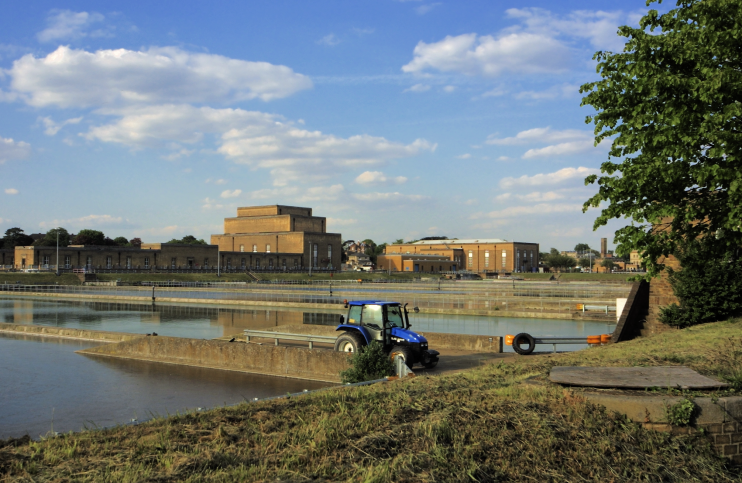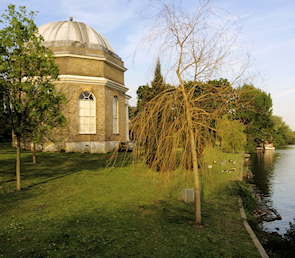Hampton
Hampton, Richmond upon Thames
A settlement by a bend in the river (which is what its name means) in the south-west corner of Richmond borough

Hampton’s name is used both for the Thames-side locality west of Bushy Park and for the entire district that extends from Marling Park and Nurserylands in the west to Hampton Wick, three miles to their east.
The early village, surrounded by arable land, would have been centred on Thames Street and Church Street and the southern end of the High Street. There are records of a church on Thames Street, on present site of St Mary the Virgin, in 1342. By 1500 the population of Hampton and Hampton Wick was over 300, a figure that had doubled by 1600 and doubled again by 1700.
In 1754 the actor David Garrick came to live at Hampton House, now Garrick Villa, and built an octagonal ‘temple to Shakespeare’ in the part of the garden beside the Thames. Shown in the photograph below, the tiny temple is open free of charge on Sunday afternoons from the first Sunday in April to the last in October. Garrick’s grade‑I listed house, now converted to nine apartments, is strictly off limits to the public.

The 1852 Metropolitan Water Act prohibited the London water companies from taking water from below the tidal reach of the river and the consequent building of a waterworks here (shown in the photograph above) was to change Hampton radically.
Pumping stations, reservoirs, filter beds and associated buildings were constructed along the river, altering the appearance of the area and employing large number of people in addition to the labour needed to build the works.
Hampton station opened in 1864 and this stretch of the river, and its islands, became popular for houseboats, regattas and picnicking.
The area around the station was mostly developed in the 25 years after 1880; the River Hill Estate (between Plevna Road and Belgrade Road) was laid out in 1878; and the area around Carlisle Park started to be developed, slowly, from 1897.
The little islands called Garrick’s Ait and Platt’s Eyot were raised in height when soil was deposited on them during the excavation of more filter beds in the last years of the 19th century.
An open-air pool opened on the High Street in 1922 but closed in 1981 when it was no longer considered financially viable by the council. Local enthusiasts managed to keep it from being dismantled and it reopened in 1985 as a heated swimming pool, open all year round.
The pump houses of the riverside waterworks are no longer in use but are listed buildings. Some of the filter beds are no longer needed but the land has green-belt designation, which Thames Water wants to have lifted so that it can develop the area; so far, the company has been unsuccessful.
